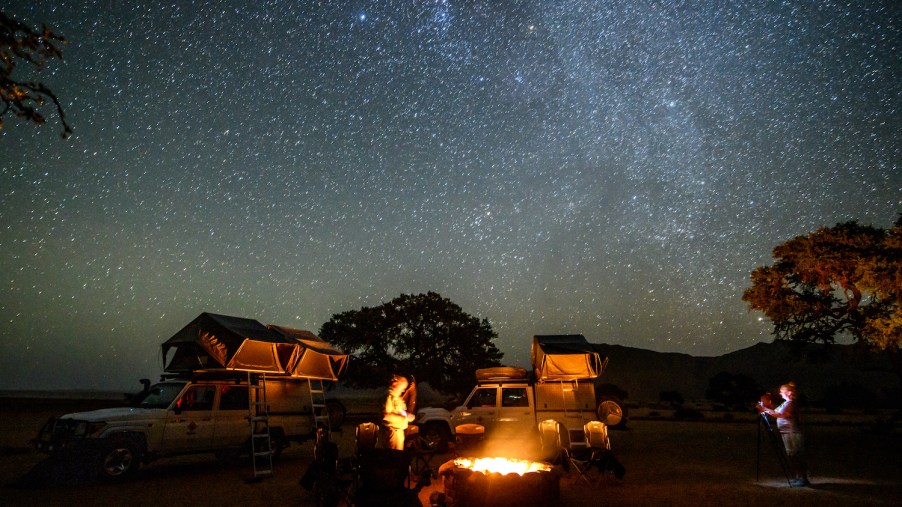
Overland Camping Shelter Options Pros and Cons
Overland camping is one of the fastest-growing hobbies in the world. Many outdoor fans love exploring the remote wilderness and camping out with the added comfort of their vehicle. Many off-roading enthusiasts find that adding a camper setup to their 4×4 enables them to hit the trails for an entire weekend–or longer. But what is the best overland camping shelter option?
There are several different options for camping while overlanding:
- Sleeping inside your vehicle
- Setting up a ground tent or hammock
- Installing a rooftop overland camping tent
- Buying an off-road camper
Each overland camping shelter option has pros and cons. Read on to find out more about each option, and decide for yourself.
Sleeping In Your Vehicle is a Cheap Overland Camping Shelter Option
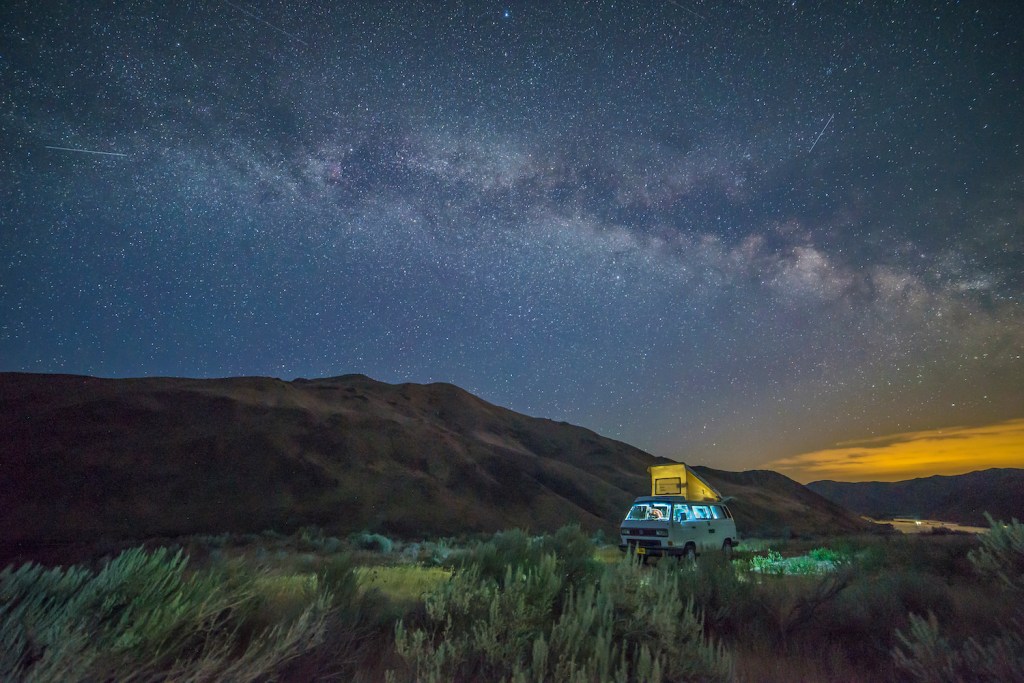
For many overlanders, sleeping in their vehicle is the obvious choice: their vehicle is comfortable, warm, and dry. They fold their back seats down to fashion a comfortable sleeping surface, or they may crawl into the bed of their truck. One downside of sleeping in your vehicle is moving any gear stored there every time you set up camp.
Depending on your sleeping surface, some sleeping pads or an air mattress may be a must. Most truck owners use a camper shell for weather protection and warmth. When sleeping inside a vehicle, ventilation is key, so cracking your windows and hanging some mosquito netting may be vital to getting a good night’s sleep.
A Ground Tent or Hammock is a Versatile Overland Camping Shelter Option
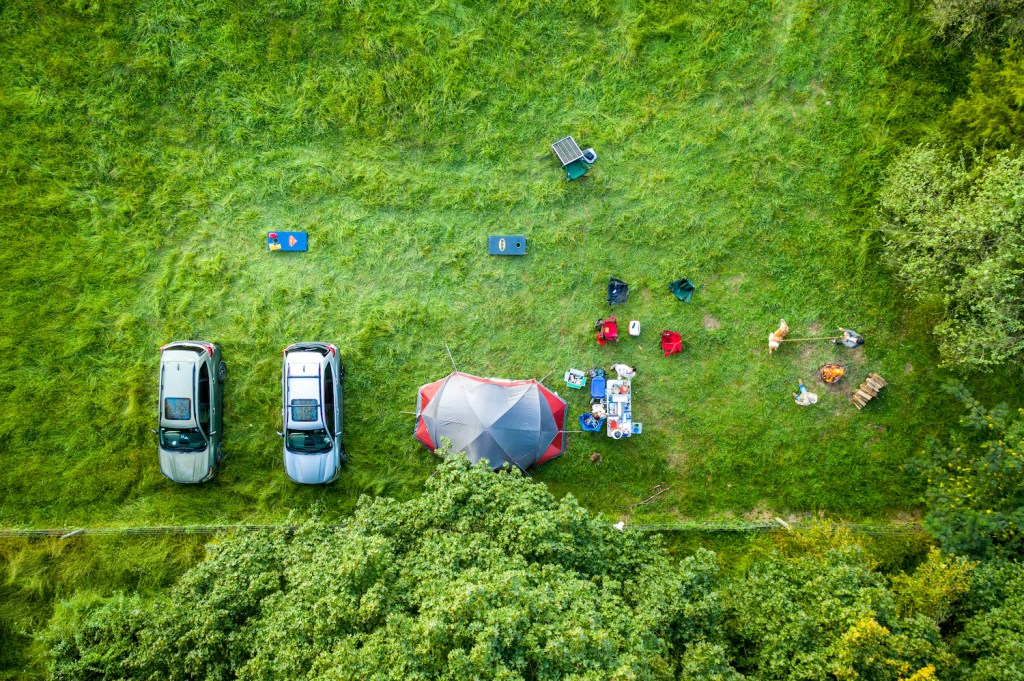
Many overlanders prefer to park their vehicle, then set up a campsite nearby. Some people set up a ground tent, others hang a hammock, and a few prefer to sleep under the stars.
Many outdoorspeople swear by their ground tents. Once you invest in a ground tent, you can use it for multiple adventures–including overlanding. You will need to find a flat spot and take several minutes to set up their tent, but then you are good to go. Consider that some climates require specialty winter tents. Valuable upgrades to your tent include a tarp to use as a ground cloth and sturdier aftermarket tent stakes.
Camping hammocks are lightweight and comfortable–it is no surprise they are exploding in popularity. Overlanders can rig a hammock between two trees or between a tree and vehicle bumper and climb in for some shut-eye. In many climates, you will need to hang mosquito netting or a tarp over your hammock.
Rooftop Tent Pros and Cons
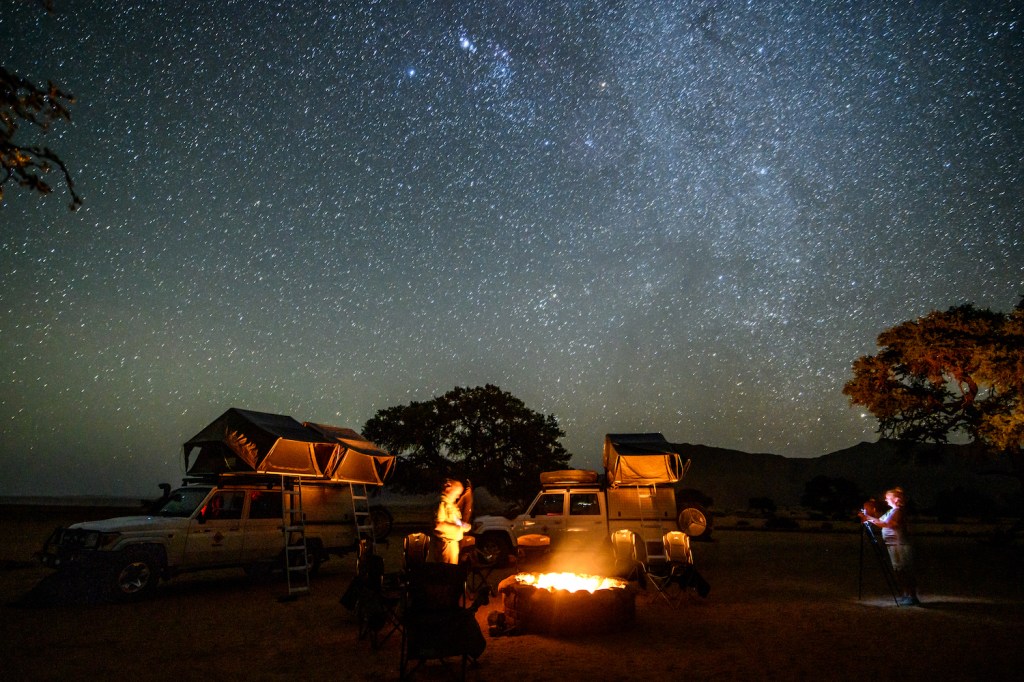
You may have seen sweet rooftop tent setups on an increasing number of overland vehicles. On the pro side: Many rooftop tents are very comfortable, even featuring a thin built-in mattress. Some overlanders prefer the security of camping on top of their rig, far away from animals. Rooftop tents are also very fast to set up and close down.
On the con side: Rooftop tents are an expensive option, ranging from $800 to $4,000. Rooftop tents are also very heavy, heavier than most other overlanding gear–and not ideal for every car. In addition, they need a roof rack which adds more cost and weight. This added weight can slow your vehicle down and waste fuel. Finally, in windy conditions, rooftop tents can blow back and forth, and the fabric can make a lot of noise.
Softshell Rooftop Tent or Hardshell Rooftop Tent
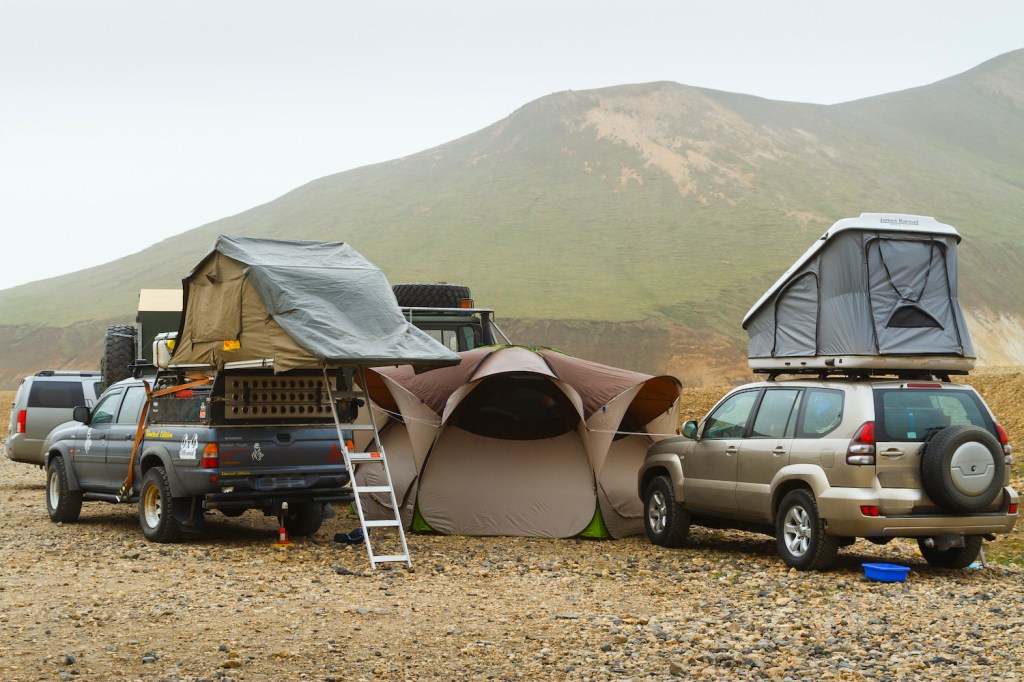
A hardshell rooftop tent is packaged under a solid roof. This roof is either hinged at the front of the tent or sits on four hydraulics; setup is as simple as lifting this roof. Hardshell rooftop tents are the quickest rooftop option to set up. But hardtop tents are limited to the width of your vehicle, so some models are shorter on sleeping space than softshells. The hardtop shell offers added protection–both while driving and while camping in extreme rain or sleet. Hardshell tents are also the more expensive rooftop option, usually costing between $2,000 and $5,000.
A softshell tent is essentially a normal tent, mounted to the roof of your vehicle. Many softshell rooftop tents unfold to twice the size of your roof–thus offering tons of sleeping space. Softshell tents usually take a few minutes longer to set up than hardshell tents, but they often cost less. You should budget between $1,000 and $2,000 for a softshell tent. You can see Popular Mechanics‘ 2021 rooftop tent ratings.
An Off-Road Camper is a Convenient Overland Camping Shelter Option
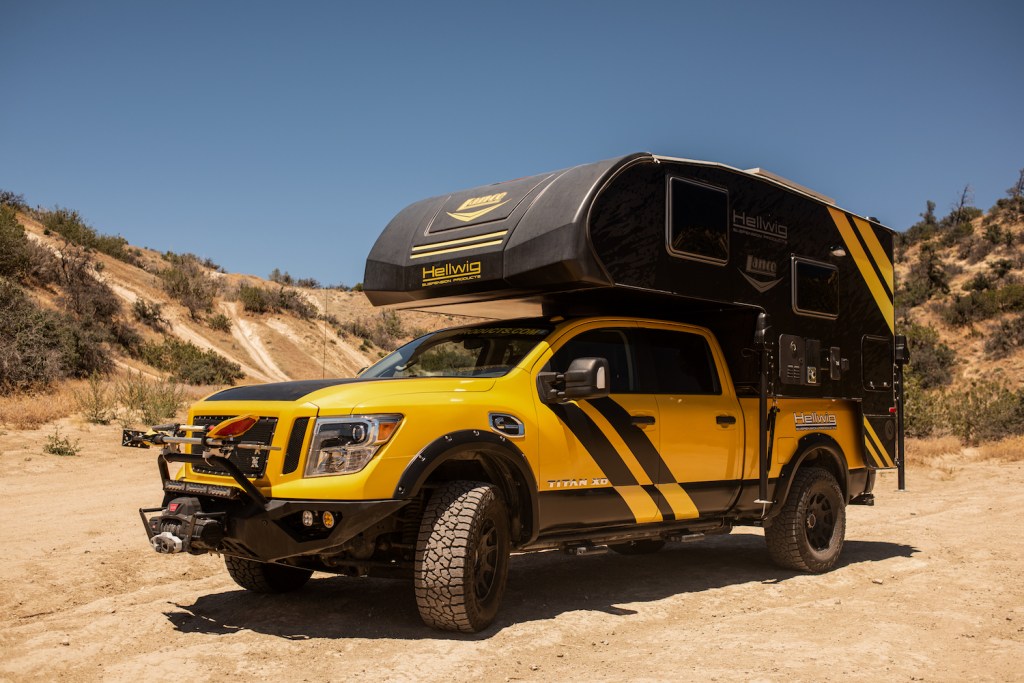
Some overlanders take a camper with them into the wilderness. Popular camper options include truck-bed campers and overland-ready camper trailers. Many campers take little or no time to set up. But they are also the most expensive option: often costing between $10,000 and $20,000 dollars. There is a dizzying array of campers available: The outdoorsy website has a great ranking of off-road-ready trailers, and truck camper adventure maintains a list of lightweight truck bed campers fit for off-roading.



